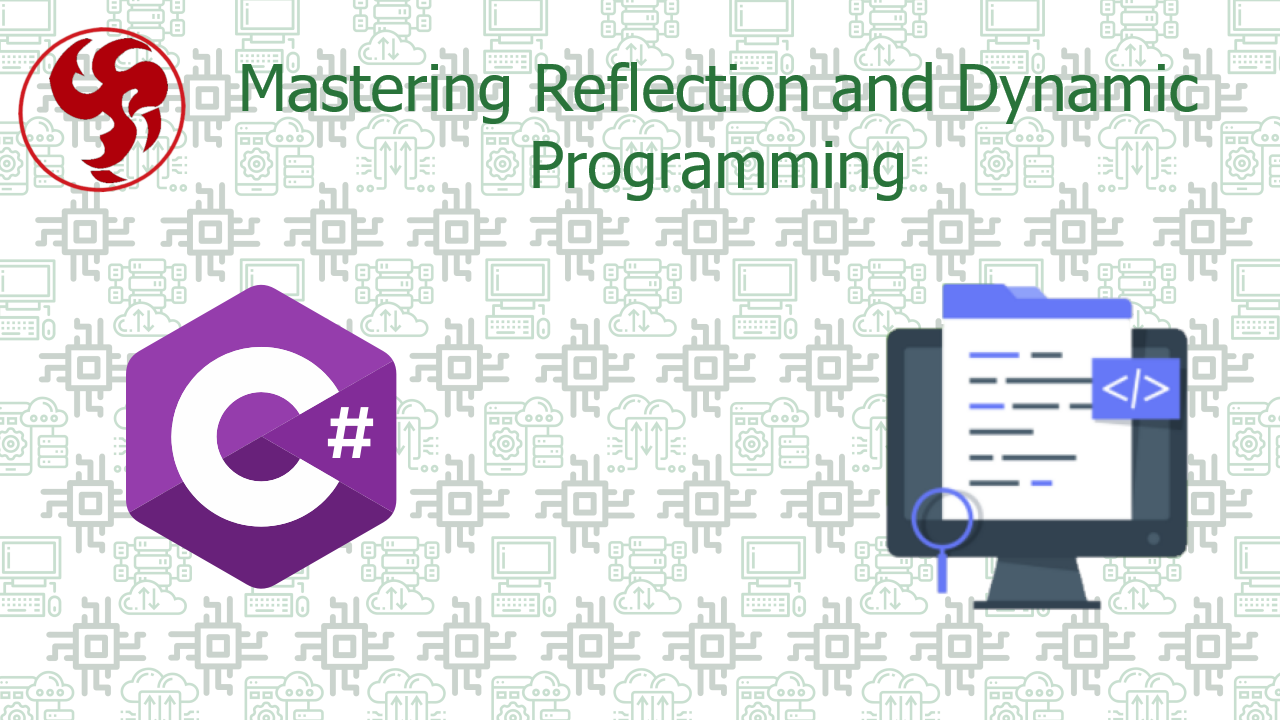Mastering Reflection and Dynamic Programming
Table of Contents
Deep Dive into Reflection Fundamentals
The Reflection Type System
Assembly Loading Strategies
Advanced Member Discovery
Dynamic Programming Techniques
Dynamic Instantiation Patterns
Method Invocation Optimization
Late-Bound Delegates
Performance Optimization
Reflection Caching Strategies
Emit vs Reflection Tradeoffs
Benchmark Comparisons
Real-World Applications
Plugin Architectures
Dynamic Proxies
Expression Tree Compilation
Advanced Scenarios
Cross-Assembly Reflection
Security Considerations
Debugging Techniques
1. Deep Dive into Reflection Fundamentals
1.1 The Reflection Type System Hierarchy
Key insights:
Type is the gateway to all reflection operations
All member types derive from MemberInfo
Method and constructor information shares common base class
1.2 Assembly Loading Strategies
Loading Context Comparison:
| Method | Execution | Isolation | Unloading |
|---|---|---|---|
| Load | Yes | No | No |
| LoadFrom | Yes | Partial | No |
| ReflectionOnlyLoad | No | No | No |
| AssemblyLoadContext | Yes | Full | Yes |
1.3 Advanced Member Discovery
Beyond basic GetMethods(), C# offers granular control:
BindingFlags Cheat Sheet:
| Flag | Purpose |
|---|---|
| Public | Include public members |
| NonPublic | Include private/protected |
| Instance | Include instance members |
| Static | Include static members |
| FlattenHierarchy | Include parent class members |
2. Dynamic Programming Techniques
Dynamic programming in C# leverages reflection to create flexible, runtime-determined behavior. Below are detailed explanations of each subsection.
2.1 Dynamic Instantiation Patterns
Option 1: Activator (Simplest)
The Activator.CreateInstance method is the easiest way to instantiate objects dynamically, but it has limitations:
Pros:
Simple and concise.
Works well for types with parameterless constructors.
Cons:
Slower than direct instantiation.
Limited control over constructor selection.
Option 2: ConstructorInfo (More Control)
For better performance and flexibility, use ConstructorInfo:
When to use:
When you need to select a specific constructor.
When performance is a concern (caching ConstructorInfo improves speed).
Option 3: FormatterServices (Bypass Constructors)
For advanced scenarios where you want to skip constructors (e.g., deserialization):
Use cases:
Custom serialization.
High-performance object creation (but requires manual initialization).
2.2 Method Invocation Optimization
Standard Reflection (Slow)
Drawbacks:
Slow due to parameter boxing and runtime checks.
Not suitable for high-frequency calls.
Delegate Cache (Faster)
Compile a delegate once and reuse it:
Performance gain:
✔ 20-100x faster than raw reflection.
Expression Tree Compilation (Fastest)
For near-native speed, compile a lambda at runtime:
Best for:
✔ High-performance scenarios (e.g., serialization, ORMs).
2.3 Late-Bound Delegates
Sometimes, you need dynamic delegates for unknown methods at compile time:
Use cases:
✔ Event handlers.
✔ Callback mechanisms in plugins.Performance Benchmark:
| Method | Invocations/sec |
|---|---|
| Direct Call | 100,000,000 |
| Expression | 90,000,000 |
| Cached Delegate | 50,000,000 |
| Reflection | 100,000 |
3. Performance Optimization
3.1 Reflection Caching Strategies
Basic Cache:
Hierarchical Cache:
3.2 Emit vs Reflection Tradeoffs
Emit Example (Dynamic Method Generation):
4. Real-World Applications
4.1 Plugin Architectures
4.2 Dynamic Proxies
5. Advanced Scenarios
5.1 Cross-Assembly Reflection
Reflection across multiple assemblies requires careful handling.
Loading Dependencies
Finding Types Across Assemblies
Strong-Named Assembly Resolution
5.2 Security Considerations
Reflection can bypass access modifiers, so security is critical.
Partial Trust Restrictions
Secure Critical Operations
Avoiding Malicious Code Execution
5.3 Debugging Dynamic Code
Debugging dynamically generated code requires special techniques.
Inspecting Dynamic Assemblies
Debugging Dynamic Methods
Using Debugger Attributes
Conclusion
This guide has explored reflection from basic type inspection to advanced code generation techniques. Key takeaways:
Understand the reflection hierarchy - Know how Type, MethodInfo, and related classes interact
Optimize performance - Cache reflection objects, use delegates, or generate IL
Apply patterns properly - Choose the right approach for plugins, proxies, or serialization
Consider security - Reflection requires careful permission management
Debug effectively - Special techniques needed for dynamic code
